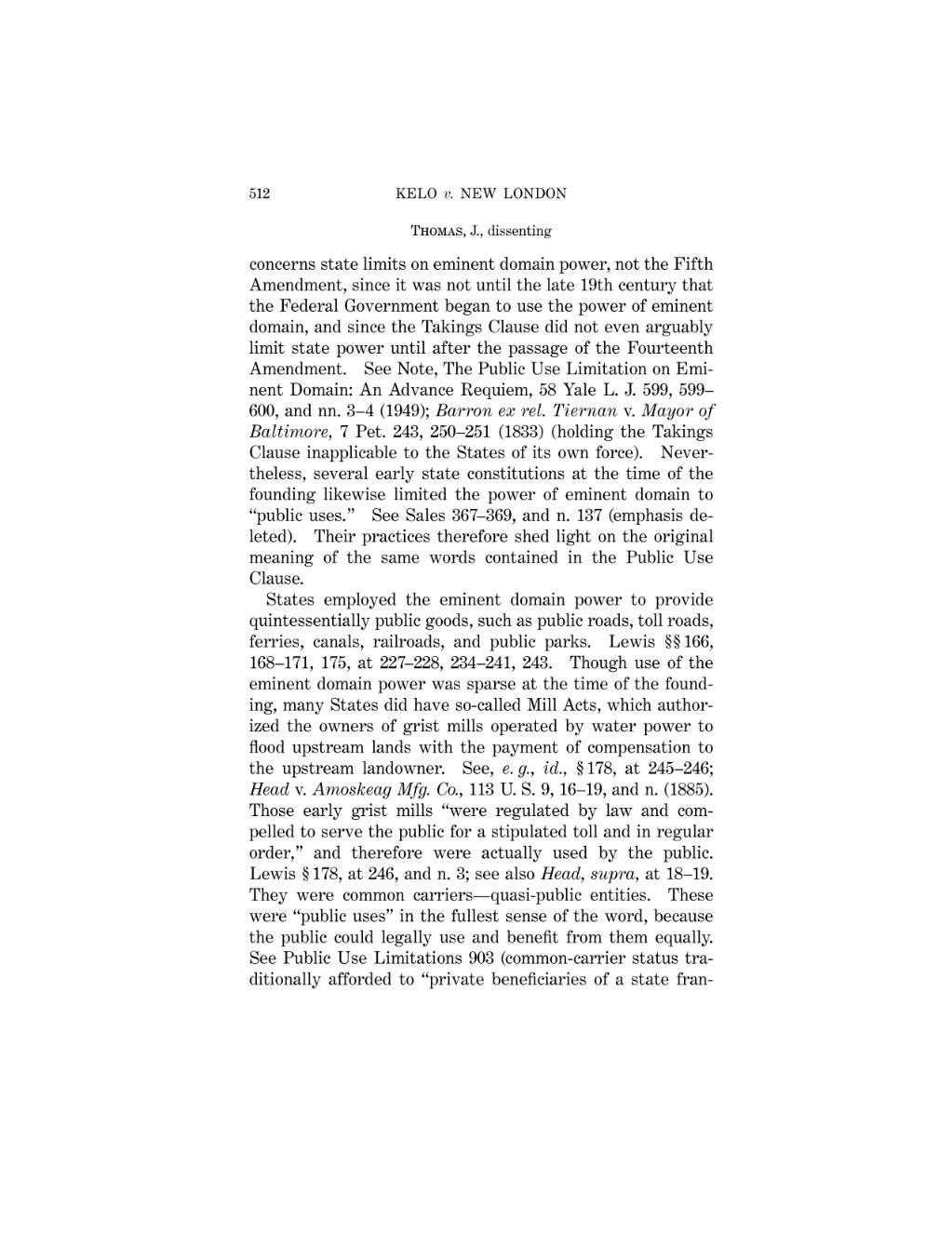Thomas, J., dissenting
concerns state limits on eminent domain power, not the Fifth Amendment, since it was not until the late 19th century that the Federal Government began to use the power of eminent domain, and since the Takings Clause did not even arguably limit state power until after the passage of the Fourteenth Amendment. See Note, The Public Use Limitation on Eminent Domain: An Advance Requiem, 58 Yale L. J. 599, 599–600, and nn. 3–4 (1949); Barron ex rel. Tiernan v. Mayor of Baltimore, 7 Pet. 243, 250–251 (1833) (holding the Takings Clause inapplicable to the States of its own force). Nevertheless, several early state constitutions at the time of the founding likewise limited the power of eminent domain to “public uses.” See Sales 367–369, and n. 137 (emphasis deleted). Their practices therefore shed light on the original meaning of the same words contained in the Public Use Clause.
States employed the eminent domain power to provide quintessentially public goods, such as public roads, toll roads, ferries, canals, railroads, and public parks. Lewis §§166, 168–171, 175, at 227–228, 234–241, 243. Though use of the eminent domain power was sparse at the time of the founding, many States did have so-called Mill Acts, which authorized the owners of grist mills operated by water power to flood upstream lands with the payment of compensation to the upstream landowner. See, e. g., id., §178, at 245–246; Head v. Amoskeag Mfg. Co., 113 U. S. 9, 16–19, and n. (1885). Those early grist mills “were regulated by law and compelled to serve the public for a stipulated toll and in regular order,” and therefore were actually used by the public. Lewis §178, at 246, and n. 3; see also Head, supra, at 18–19. They were common carriers—quasi-public entities. These were “public uses” in the fullest sense of the word, because the public could legally use and benefit from them equally. See Public Use Limitations 903 (common-carrier status traditionally afforded to “private beneficiaries of a state fran-

